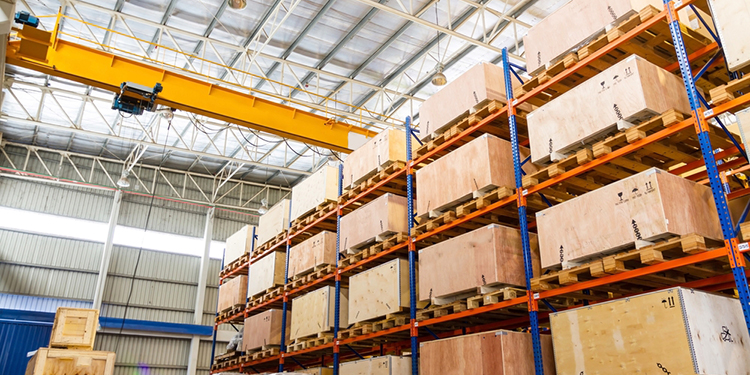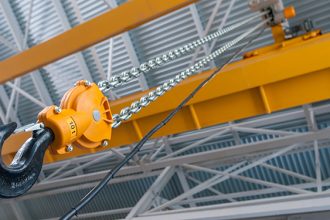Five Line Item Costs Reduced By Overhead Lifting Solutions

Engineered to fit a wide variety of overhead handling needs, cranes, hoists and monorails can significantly reduce costs in multiple ways across an operating budget. That’s because the deployment of one or more of these lifting solutions within a warehousing or manufacturing facility supports both operational productivity and process efficiency for a positive impact on five key line items:
1. Maintenance. Unlike other types of material handling equipment utilized for load transport and placement, overhead lifting solutions require less frequent maintenance. They also utilize fewer moving parts, making their service and upkeep quicker and easier to complete. This contributes to an overall reduction in downtime, labor, service parts and other costs associated with equipment maintenance and repair.
2. Transport Labor. Because a single overhead lifting system covers a large work area, it can replace multiple floor traveling vehicles. Those vehicles can be deployed elsewhere within a facility (or eliminated entirely). Additionally, as overhead handling equipment requires just one operator to control and direct load movement, employees previously dedicated to these tasks can be reassigned to other, more value-added duties, not only cutting load movement costs but also contributing positively to the bottom line.
3. Product Damage. Overhead lifting solutions offer an alternative to floor-based product movement that greatly minimizes the risk of product (and facility) damage—and the corresponding negative impact on the bottom line. They enable direct-path transportation over the top of any obstacles, avoiding collisions. Further, they self-center each load to preventing it from overturning while controlling its movement with multiple speed options. This heightened degree of control dramatically lowers the chances of—and costs associated with—product damage. They also are ideal for moving large, odd-shaped loads. Many systems also allow for very precise positioning, which can be critical when loading and unloading production machines and related equipment.
4. Worker Safety. Transporting loads from 50 pounds to 50 tons (or more), overhead handling solutions prevent workers from ergonomic injuries caused by manually lifting, pushing or pulling heavy loads. This equipment is also restricted to a specific area, limiting personnel exposure to the potential for accidents caused by floor-based load moving vehicles. By protecting employees, these lifting systems can contribute to a reduction in injuries, accidents, missed work days and workers’ compensation costs.
5. Facility Utilization. Many operations don’t take advantage of the overhead space in their buildings, electing to use floor-based transport and placement equipment instead. Overhead lifting solutions, however, enable greater lifting elevations for higher stacking heights, yielding more efficient usage of vertical space. This allows an operation to optimize the cubic volume of an existing facility to handle more products without needing to acquire more land or buildings. Additionally, because they move a load directly from one location to another overhead (without having to navigate through or around aisles, columns, equipment and other obstacles), cranes, monorails and hoists save transport time for an increase overall operational efficiency.
Interested in hearing more about other cost savings delivered by overhead handling systems? Download the free publication, “Expand Your Possibilities. Discover the Potential. Choose Overhead Lifting,” produced by MHI’s Overhead Alliance (which includes the Crane Manufacturers Association of America (CMAA), the Hoist Manufacturers Institute (HMI), and the Monorail Manufacturers Association (MMA)).



